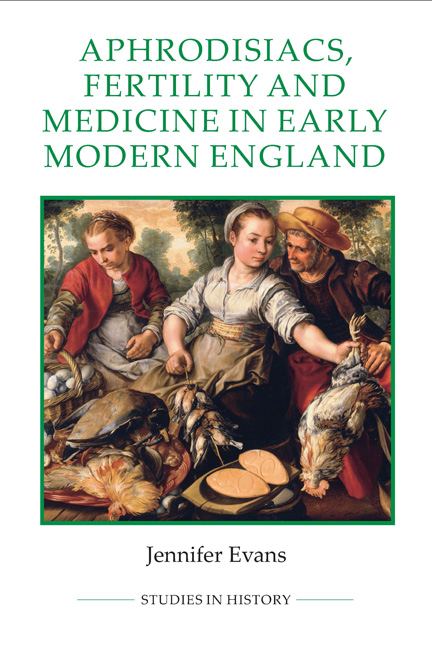Book contents
- Frontmatter
- Contents
- List of illustrations
- Acknowledgements
- Abbreviations
- Note on the text
- Glossary
- Introduction
- 1 Texts, readers and markets
- 2 The reproductive and the infertile body
- 3 Provoking lust and promoting conception
- 4 Enchanted privities and provokers of lust
- 5 Aphrodisiacs, miscarriage and menstruation
- Conclusion
- Bibliography
- Index
3 - Provoking lust and promoting conception
Published online by Cambridge University Press: 05 November 2014
- Frontmatter
- Contents
- List of illustrations
- Acknowledgements
- Abbreviations
- Note on the text
- Glossary
- Introduction
- 1 Texts, readers and markets
- 2 The reproductive and the infertile body
- 3 Provoking lust and promoting conception
- 4 Enchanted privities and provokers of lust
- 5 Aphrodisiacs, miscarriage and menstruation
- Conclusion
- Bibliography
- Index
Summary
‘If the barren Woman be naturally cold and insensible of Pleasure during the venereal Action … let the Remedia Aphrodisiaca be employed, which are met with almost in all medicinal Books and which should be made hot to warm the Patient.’
In this recommendation, which appeared in his 1743 treatise, Jean Astruc declared that female barrenness should be treated with aphrodisiacs. This typified the way in which early modern medical writers, physicians and the wider populace understood sexual stimulants. In this instance Astruc focused upon how aphrodisiacs that warmed the body and added fuel to the fire of sexual desire could rectify what was recognised as a very common cause of infertility, frigidity. However, his statement could easily have been applied to a range of substances that heated the body, provided nutrition, imbued the body with salt or wind, or that were taken from animals with a lascivious nature, and plants with a phallic appearance. Each of these types of substance were thought to stimulate the sexual organs and to increase the body's desire for sexual intercourse. This was the first way in which aphrodisiacs were considered to be key treatments for infertility; without sexual desire there was no motivation to engage in sexual intercourse and so no chance of reproduction occurring. More than this though, aphrodisiac substances were thought to improve the reproductive potential of the body.
- Type
- Chapter
- Information
- Aphrodisiacs, Fertility and Medicine in Early Modern England , pp. 87 - 130Publisher: Boydell & BrewerPrint publication year: 2014



